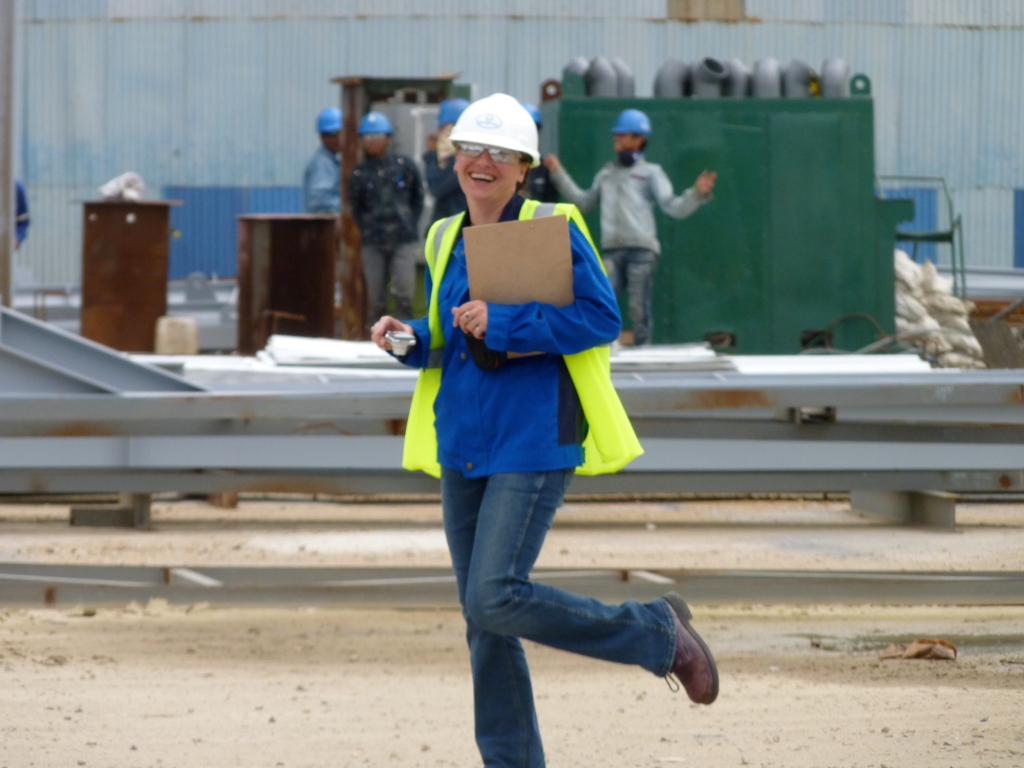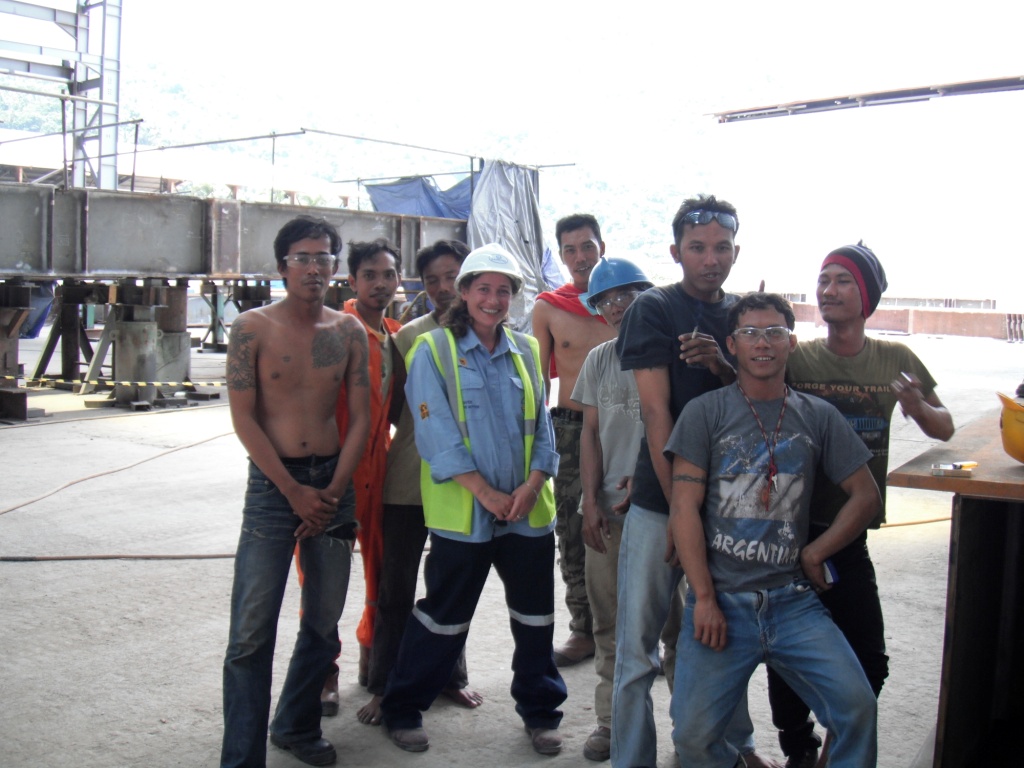Welcome to my world in Indonesia
Host: Lisa Wood/AGP Indonesia
Written by Lisa Wood – Traceability Officer, AGP.
Hi, as your host for this week, I’ll be taking you through what happens with Aus Cattle from the importers perspective. I work for an Indonesian importer and have been in Indo for close to three years. There are so many people involved in Australian cattle over here; the numbers still blow me away.
My original plan was to have a few key people in the company contribute a section to provide a complete picture of what happens after the cattle arrive here, yet, as is so often the case, things don’t always happen to schedule, or to plan.
I wanted to have the guy who deals with the import side of things (that bit sort of worked); then a bit from the guy who oversees the transportation from the ship to the feedlot share his bit (that bit didn’t work). This was to be followed by some info from the guys at the feedlot who first scan the cattle in, and then what happens at induction. Next was going to be a bit written by the feedlot vet and the feedlot engineer; and something from the feedlot manager. I wanted to have something from the guys who oversee the feeding and a bit from the marketing team that handle sales. Finally I wanted to finish off with our AWO (Animal Welfare Officers) manager. In short, it takes a HUGE team of people on this side of the sea to make sure the cattle are well taken care of and that ESCAS (Exporter Supply Chain Assurance System) happens.
Then I got busy with my day job, as did everyone else. That, added to the difficulties of writing in a second language (which I TOTALLY understand), then lo and behold, the dates allotted to us have quickly jumped on me. So, this series of posts has changed from my ‘dream plan’ to what I have been able to achieve. It is important to me to share with my fellow Australians what happens over here. This is the best I could do under the circumstances. I hope you enjoy.
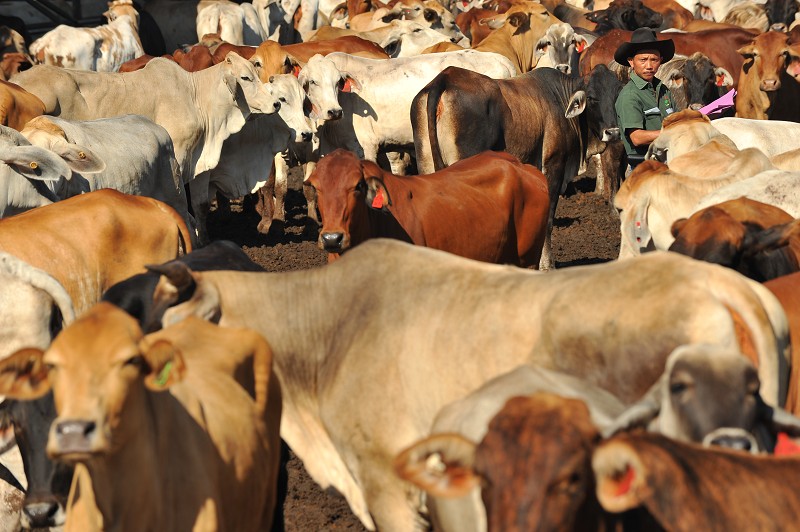 Australian cattle in an Indonesian Feedlot.
Australian cattle in an Indonesian Feedlot.
Where possible, I have interviewed different members of the team, and then taken my scrawled notes; illegible words; incomplete sentences; hopeful memory of what they have said and my own personal experiences to give you a small insight to the Indonesian side of the ‘Imported’ Australian cattle story.
First, a bit of personal history, I used to work in construction. So, how does a chick working in the construction/fabrication industry end up working in cattle? A simple case of ‘right place, right time’. I came to Indonesia to be part of a traceability team working on a steel fabrication project for a WA mining job (Part of the long list of stuff that gets sent off shore for processing and then bought back to Aus for use – go figure!?). At our wind-up, end of contract, going away party, I met a guy who has been working with cattle his whole life. We conversed, and after he sussed out where I was coming from, he invited me to go view a couple of Indo abattoirs in action. As I’m still am a country kid at heart, and had helped with sheep during my childhood, I was more than happy to pass up the doof of the nightclub and go with him to learn what really happens in an Indonesian abattoir.
That first night, I was impressed. ESCAS had not yet been implemented, yet everyone knew it was on its way and were busy working to the requirements. I did not witness any scenes like those I later saw in the 4 Corners show. I had no idea what to expect, yet, I like to operate with an open mind and try to be without judgement. To me, and my previous experiences with slaughtering sheep, it looked to be very good, standard practice.
That fateful night lead via a series of emails; meetings and word of mouth to the position I hold today.
Preparation for the full implementation of ESCAS was already in full swing by the time I joined my new team. Initial audits had already been done, supply chains had (and still were) been approved by DAFF (Department of Agriculture, Forestry and Fisheries). Exporters had us going through test runs with reporting, we were testing new traceability equipment and making sure the AWO’s knew what they had to do. It was very busy with new lessons being learnt every day – after all, we only had three months to change a nation. Those of you who have had to implement a new software program and associated training will understand what we were up against.
Fortunately I already knew ‘traceability’, it was the ‘cattle’ bit that was totally new. I simply transferred my knowledge of dealing with clients in an oil & gas/mining situation to that of cattle under NEW regulations.
Most of the time I sit at my desk – except for when I go for meetings, or acting as guide for guests at the feedlot, or when I do my abattoir rounds. This is when I visit each of the abattoirs in our supply chain, keeping contact with our AWO’s (Animal Welfare Officers) and checking that everything in the abattoirs is OK. There’s another member of our team that does this also, Alim (I’m still trying to wrangle some words out of him). We simply back each other up and give a different face to the boys, making sure they keep on their toes and everything up to par.
To This!
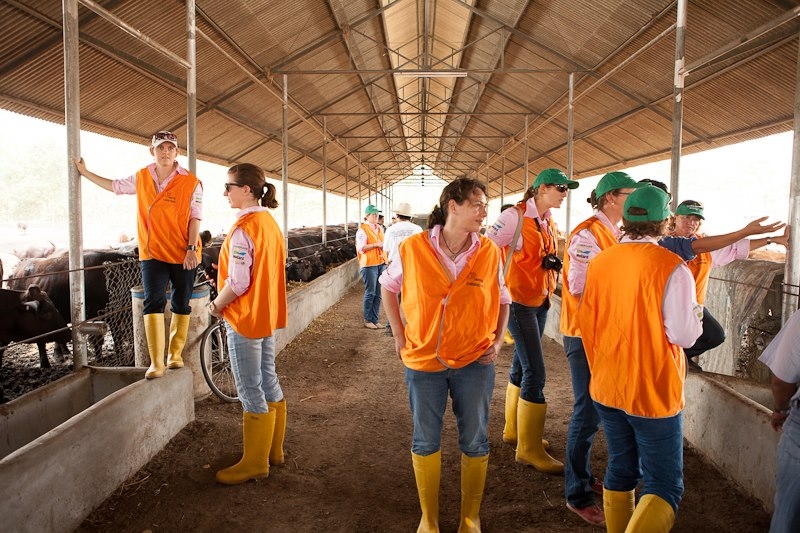
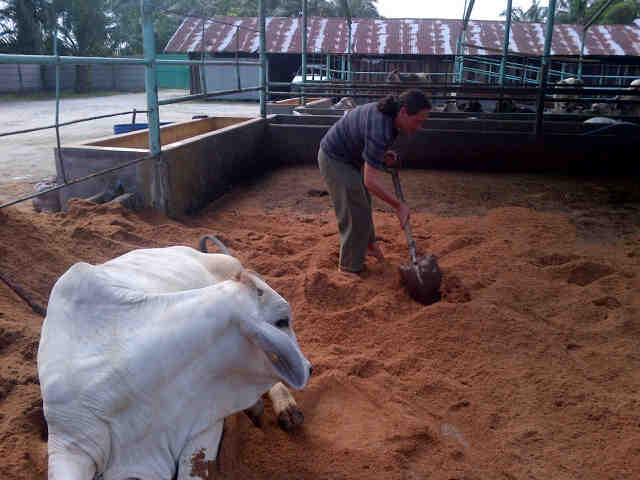
Stay tuned tomorrow where I introduce other member of the team and describe the Import Process.

